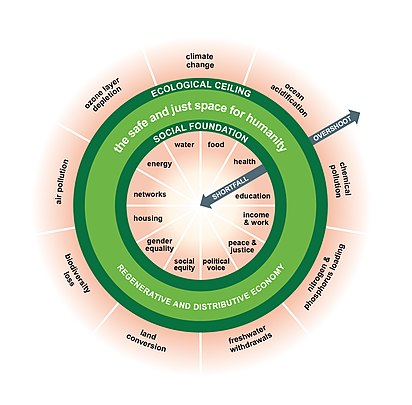No, not the delicious edible kind, but doughnut economics.
The Doughnut, or Doughnut economics, is a visual framework to illustrate sustainable development. The doughnut shape combines the concept of planetary boundaries with the complementary concept of social boundaries. The name derives from the shape of a diagram, i.e., a disc with a hole in the middle. The center hole of the model shows the proportion of people that lack access to life’s essentials, such as healthcare, education, housing, wealth, etc. while the crust represents the physical/ecological ceilings or boundaries that life depends upon.
The diagram was developed by University of Oxford economist Kate Raworth in her 2012 Oxfam paper A Safe and Just Space for Humanity and elaborated upon in her 2017 book Doughnut Economics: Seven Ways to Think Like a 21st-Century Economist.
The framework was proposed to couple economic performance with the needs of people and ecological limits. The main goal is to re-frame economic problems and set realistic goals. It is a way to more clearly define what is a “prosperous” economy.
It is an ambitious vision of the way the world might work…There’s a long way to go. The reason I like it is because it forces organizations think beyond transactions to value and sustainable solutions.

Leave a Reply
You must be logged in to post a comment.